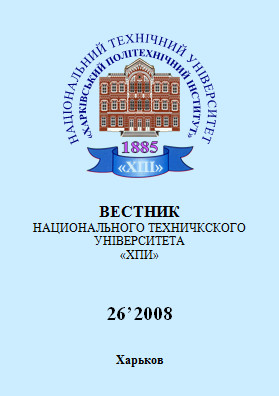Нормализация перспективных преобразований проективно искаженных изображений
DOI:
https://doi.org/10.20998/%25xAbstract
Исследованы особенности аффинных и проективных преобразований. Разработана математическая модель критерия идентификации проективной группы преобразований для систем технического зрения. На базе предложенного критерия построен алгоритм компенсации перспективных преобразований на проективно искаженных изображениях, что значительно облегчает дальнейшую нормализацию, т.к. изображение остается под действием только аффинной группы преобразований.References
Путятин Е.П., Аверин С.И. Обработка изображений в робототехнике. М.: Машиностроение, 1990. – 320с.
Любченко В.А., Путятин Е.П. Математические модели зрительного восприятия и нормализации изображений // Проблемы бионики. – 2002. – №56. – С. 44-48.
Мышкис А.Д. Лекции по высшей математике. – М.: Наука, 1973. – 640 с.
Любченко В.А., Путятин Е.П. Математические модели нормализации перспективы // Проблемы бионики. – 2000. – №53. – С. 22-27.
Downloads
How to Cite
Любченко, В. А., Яковлева, Е. В., & Передрий, Е. О. (2017). Нормализация перспективных преобразований проективно искаженных изображений. Bulletin of National Technical University "KhPI". Series: System Analysis, Control and Information Technologies, (26), 174–184. https://doi.org/10.20998/%x
Issue
Section
SYSTEM ANALYSIS AND DECISION-MAKING THEORY
License
Copyright (c) 2017 Bulletin of NTU “Kharkiv Polytechnic Institute”. Series: System Analysis, Control and Information TechnologiesAuthors who publish with this journal agree to the following terms:
- Authors retain copyright and grant the journal right of first publication with the work simultaneously licensed under a Creative Commons Attribution License that allows others to share the work with an acknowledgement of the work's authorship and initial publication in this journal.
- Authors are able to enter into separate, additional contractual arrangements for the non-exclusive distribution of the journal's published version of the work (e.g., post it to an institutional repository or publish it in a book), with an acknowledgement of its initial publication in this journal.
- Authors are permitted and encouraged to post their work online (e.g., in institutional repositories or on their website) prior to and during the submission process, as it can lead to productive exchanges, as well as earlier and greater citation of published work (See The Effect of Open Access).


